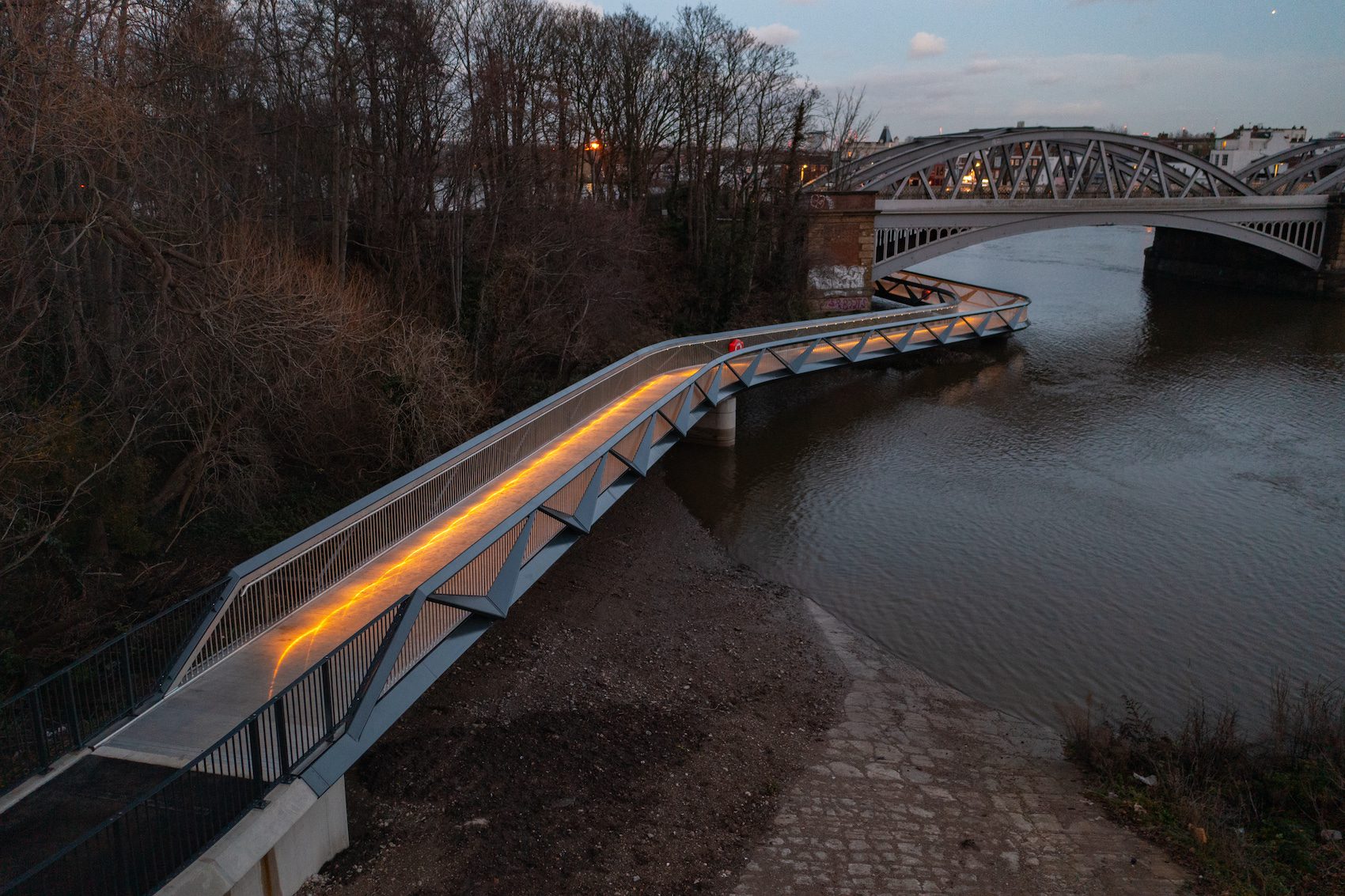Moxon Architects’ new footbridge in Chiswick, west London, rejuvenates a previously disconnected section of the Thames Path.
Photos
Simon Kennedy, Aerial Essex
Designed by Moxon Architects, in collaboration with structural engineer COWI, the Dukes Meadows Footbridge, is located in Chiswick, west London, and rejuvenates a previously disconnected section of the Thames Path. Forming part of the Mayor of London’s £53m Liveable Neighbourhoods scheme, the pedestrian structure links two sections of the Thames Path, with landscaped landings providing improved access to nearby rowing clubs and sports grounds.
“Our intention was to develop an affordable, efficient and honest solution that was easy to construct and pleasing to use,” commented Ezra Groskin, Director, Moxon Architects. “With a modest and refined appearance, the bridge sits respectfully below the existing landmark structure, referencing its form without competing for attention.”
Cross and long sections
The 115-metre-long structure is divided into four slender spans that hug the shoreline and touch down on discreet piers with a minimal footprint within the tidal zone. Carefully integration into the landscaped banks either side of Barnes Bridge help the design to respect the surrounding ecology. The structure’s meandering truss form with its distinctive angled bracing members is designed to maximise oblique views of the river.
The footbridge has been designed to make it inclusive to a wider range of users, including those with wheelchairs, mobility scooters, and pushchairs, with better-lit and safer access. By enhancing the Thames Path, the structure also provides additional leisure options and encourages sustainable modes of travel. Added to this, the design also takes into account the high volume of rowing traffic along this section of the river and provides views for rowers at all tide levels.
Utilising off-site prefabrication in Tilbury, Essex, as well as the river itself for the transportation and installation of the bridge sections, the aim was to reduce environmental impacts and carbon emissions during construction. Energy-efficient lighting is designed to protect the fragile local ecosystem, and the bridge’s robust stainless steel and aluminium finishes anticipate future flooding and reduce maintenance over its expected 100-plus year lifespan. Estimates using COWI’s CO2e tool show that innovation in material specification and construction technique led to a 50 per cent reduction in carbon emissions associated with the trusses and a 30 per cent reduction in the footbridge’s overall carbon footprint.
Additional Images
Source: Architecture Today






